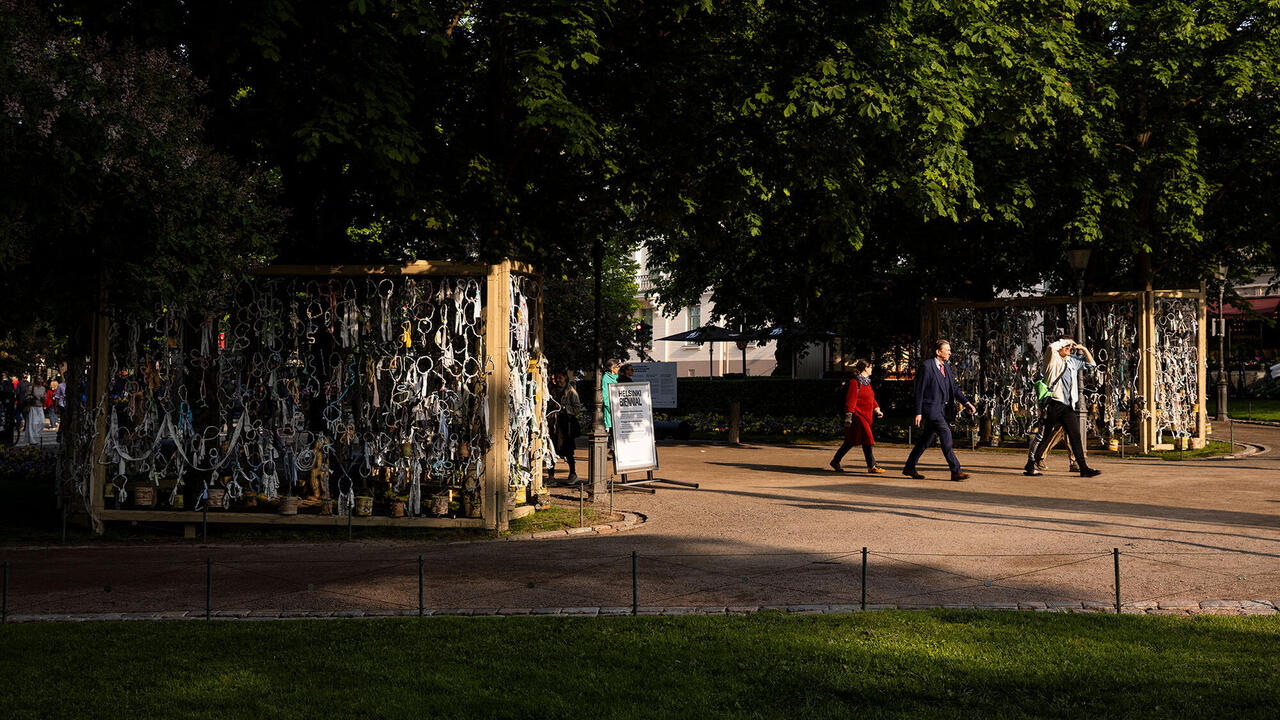TOKUSATSU

Two images currently on Japanese television are hard to escape: the Tokyo Skytree (the world’s tallest broadcasting tower, which opened in May 2012) and the US Osprey helicopters that have been stationed in Okinawa since October 2012 (amidst ongoing protest and debate around the US military’s presence in Japan). These images shimmer like scenes from a movie – the Skytree like an oversized model from a gargantuan futuristic theme park; the Ospreys like miniatures filmed with telephoto lenses. Distinguishing between sign and reality in Japan has never held the weight accorded to simulacrum divination in European culture. Here, each is modelled on the other, and each inhabits the other’s diorama.
Walking into the exhibition ‘TOKUSATSU: Special Effects Museum-Craftsmanship of Showa and Heisei Eras Seen Through Miniatures’ at the Museum of Contemporary Art Tokyo (MOT), one encountered a scale model of the destroyed Tokyo Tower. The original edifice was built in 1958 and to this day stands tall and unaffected, measuring 333 metres in height. The four-metre-high wood and fibreglass model curves downward, as if bowing, but its lean also signifies the calm, reserved acknowledgement of dimensional destruction in Japan. Today, the original tower is an old-world totem pole of girded steel and electronic transmission, remaining a powerful symbol of the country’s postwar resolve to survive the traumas of World War II (as victimizer and victim). The widespread imagining of the destruction of Japan – symbolized here in the model of the crumbling building – is not nihilistic, but a deferment to forces greater than individual desires and dreams.
Cinema prepared the Japanese psyche for this. Throughout the 1960s, a celebrated array of special-effects movies – known in Japanese as tokusatsu eiga – depicted Tokyo as a miniaturized metropolis in which men in amazing monster suits decimated urban areas, filmed in loving slow-motion. For decades, the West has ridiculed this cinematic genre, not realizing that the lack of ‘realism’ in the hyper-plastic art of tokusatsu is derived from traditional Japanese theatrical forms like kabuki and bunraku, which are founded upon the power of not being realistic.
‘TOKUSATSU’ was initiated by the famous animation studio Studio Ghibli to preserve the remaining props and artefacts from the tokusatsu films. The exhibition was a breathtaking assembly of haunting tokens created between 1958 and 1988 for cinematic series such as Godzilla, Mothra, Gamera and Ultraman. Curated by Anno Hideaki (a key member of the influential Gainax Studio), the props in this exhibition attained a hyper-real aura as they paradoxically came to life as museum displays. The numerous rooms covering two floors of MOT cannily outlined how Japanese imagineering differs from the more familiar Hollywood version. For in tokusatsu, cinema is not about magically transforming the materiality of objects: it’s about revering the innate plasticity of everything placed before the lens.
In the first room, scores of original models of futuristic (i.e. 1960s of futuristic) jets, spaceships and submarines were laid on low tables. One of the ships looked like a model of the Osprey: its presence confirmed how real TV reportage can look like an old tokusatsu movie. Viewers clearly sensed the delicacy and frailty of these silent vessels (the show had over 200,000 visitors during its three-month run), as they moved silently through the space. One felt the gravity of what these ‘imaginary’ peace-time military vehicles represented: they were actually closely modelled on the Japanese Self-Defence Forces, symbolically delimited by Article 9 of the country’s constitution during the American occupation (wherein the US-drafted article denies Japan ‘the right to beligerency’ as an active military force). The tokusatsu movies therapeutically rehearsed nation-building under such problematizing restraints. Germany did their post-war ‘disarmament therapy’ through intellectuals (from Joseph Beuys and Anselm Kiefer to Rainer Werner Fassbinder and Hans-Jürgen Syberberg). Japan did it through Godzilla and his cohorts interred on Monster Island.
Consequently, the postwar image-culture of these two Axis nations shaped Modernism and Postmodernism in their respective countries in distinct ways. Apart from the wealth of collective creativity and ingenuity on display, ‘TOKUSATSU’ provided a valuable entry point for those interested in discerning how art history and contemporary art is figured within the Japanese cultural context. As Takahashi Murakami inferred in his ‘Little Boy’ manifesto in 2005, the ‘subculture’ of these pop plasticians – model-makers turned filmmakers – simultaneously extends traditional craft perspectives (where materialism attains mystical superiority over all humanist assertions) and refracts shafts of illumination into the densely compacted surfaces of Japanese image-commentary. The power of this exhibition resulted from Anno (a key ‘insider’ of this prevalent image culture) precisely positioning the ways such artistry is imbedded with social commentary even while subsuming its voice within its artificial nature.
This became blindingly apparent in the latter stages of the show’s narrative. Having honoured the tokusatsu legacy, one was ushered into a small theatre, where a new HD short produced by Studio Ghibli was playing: Anno’s Kyoshinhei Tokyo ni Arawaru (The God Warrior Descends on Tokyo, 2012), with special effects by another Gainax staffer, Higuchi Shinji. The title was like a haiku of what ensued on screen: a monstrous harbinger of death (from Miyazaki Hayao’s Naucicaä of the Valley of the Wind, 1984) appears out of nowhere over Shinjuku and lays waste to the whole district. The all-encompassing finality of this inexplicable obliteration looked like advanced CGI. But that’s the trick: it was all done with mechanical props, forced perspectives, miniature sets and painted backdrops (detailed in exhaustive ‘making-of’ videos and props in the following rooms). Sitting amongst a packed yet silent audience, I felt the purpose behind watching this chillingly beautiful annihilation: to experience a dialectical ground-zero of filmmaking, where plasticity is not an effect but an entity.
















